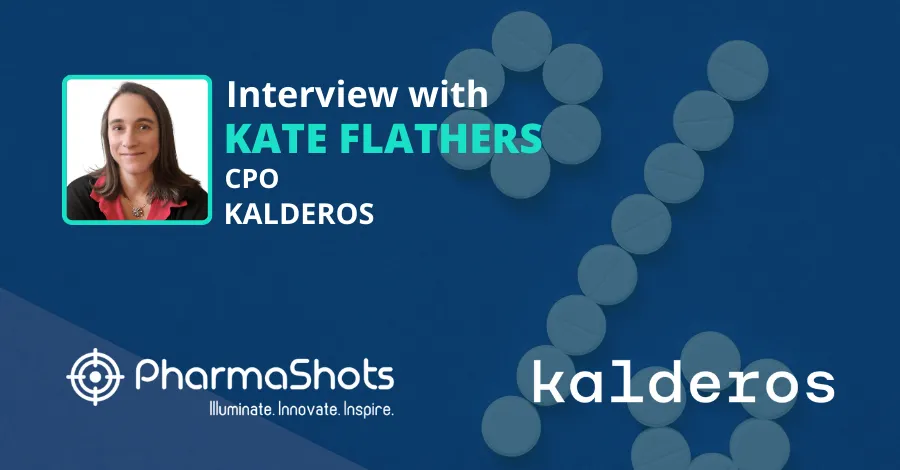
Kathleen Somera-Molina, Head of SMA Global Medical Affairs at Biogen Shares Insights on New SPINRAZA (nusinersen) Long-Term Data in SMA
Shots:
- Kathleen spoke about new long-term SPINRAZA (nusinersen) data presented at the 3rd International Scientific Congress
- She then explained the new findings from individuals with infantile-onset SMA who were treated with SPINRAZA in the pivotal ENDEAR study followed by the long-term extension SHINE study for up to 7 years
- The interview also discusses Biogen’s advances in research and three ongoing studies (DEVOTE, ASCEND, and RESPOND) to help individuals impacted by SMA
Smriti: Thanks for talking to us again, can we start by refreshing the memories of our readers with the ENDEAR trial design and the results which lead to the approval of SPINRAZA?
Kathleen Somera-Molina: SPINRAZA® (nusinersen) was evaluated in two Phase 3 randomized, double-blind, sham-controlled studies of infantile and later-onset SMA (ENDEAR and CHERISH, respectively), as well as other clinical studies.
ENDEAR (NCT02193074) enrolled infants who had received a genetic diagnosis of spinal muscular atrophy (SMA), had two copies of SMN2, and had onset of symptoms at 6 months of age or younger (most likely to develop Type 1 SMA). SPINRAZA met the primary endpoint of event-free survival in the end of study analysis, demonstrating a statistically significant 47% reduction in the risk of death or use of permanent assisted ventilation (p=0.005) and 76% reduction for those with shorter disease duration at baseline (≤13.1 weeks).
Smriti: Thanks for the recap, were there any post-hoc analysis? Can you please share the premise and the results from this post-hoc analysis of ENDEAR study
Kathleen Somera-Molina: Following a positive interim analysis in 2016 and demonstration of a positive benefit:risk profile, Biogen ended the ENDEAR study early so that all participants could have the option to receive SPINRAZA in the SHINE open-label extension study. The final results from ENDEAR were published in the New England Journal of Medicine in 2017.
ENDEAR patients who enrolled in SHINE have contributed to data presentations and publications supporting the long-term efficacy and safety of SPINRAZA.
Smriti: Can you please share the design of the LTE SHINE Study and its endpoints?
Kathleen Somera-Molina: SHINE (NCT02594124) is the largest long-term extension study of people with SMA receiving disease-modifying therapy. The study was initiated in 2015 and has evaluated important long-term safety (primary endpoint) and efficacy outcomes with SPINRAZA. The SPINRAZA clinical development program encompasses 10 clinical studies, which have included more than 300 individuals with SMA across a broad spectrum of patient populations. Patients who participated in these clinical trials had the option to enroll in SHINE.
Nearly 300 people across 14 countries have participated in SHINE and have contributed data to numerous peer-reviewed manuscripts and congress publications.
Smriti: Please share the details of the results obtained from the SHINE study (7-year analysis, top-line and details both)
Kathleen Somera-Molina: This analysis reported interim data from the infantile-onset SMA population in SHINE who transitioned from ENDEAR (n=105). Participants were analyzed in three groups by age at first study dose and timing of first dose. The new findings show:
- Continued and clinically meaningful benefit in motor function was observed with SPINRAZA treatment for ~5 years in this infantile-onset SMA population, as measured by CHOP INTEND (Children’s Hospital of Philadelphia Infant Test of Neuromuscular Disorders), RULM (Revised Upper Limb Module) and HMFSE (Hammersmith Functional Motor Scale –Expanded).
- The safety profile for SPINRAZA remains favorable and consistent with that previously reported, with no treatment-related serious adverse events observed during up to 7 years of follow-up.
Smriti: Was there any interim analysis or stage-wise results comparisons within the SHINE study?
Kathleen Somera-Molina: Results from this analysis highlight the importance of early treatment of infantile-onset SMA by the finding that participants treated at <10 months of age had the greatest improvements.
Smriti: Is there any unique information or something different Biogen learned from the SHINE which might not have been that evident from ENDEAR trial?
Kathleen Somera-Molina: ENDEAR was a sham-controlled, Phase 3 trial evaluating SPINRAZA treatment in symptomatic infantile-onset patients likely to have SMA Type 1 up to 394 days.
Patients transitioned into the SHINE study from ENDEAR and either initiated treatment with SPINRAZA in SHINE or continued their SPINRAZA treatment. Results from SHINE show participants experienced improvements in motor function and disease stabilization over ~5 years of follow-up and without significant side effects over up to 7 years of follow-up.
Smriti: Biogen is assessing SPINRAZA in DEVOTE, ASCEND, and RESPOND. What is different among these studies and what Biogen plans to achieve from these 3 studies?
Kathleen Somera-Molina: Despite significant advances in SMA and multiple available treatments, there is currently no cure and unmet medical needs remain. Therefore, the opportunity to potentially improve patient outcomes continues to be a goal, and the SMA community is seeking additional data to help inform treatment decisions.
Biogen is advancing leading research and currently has three ongoing studies aimed at improving health outcomes and addressing unmet needs for individuals impacted by SMA:
- DEVOTE (NCT04089566) is a Phase 2/3, randomized, controlled, three-part study evaluating the safety, tolerability and potential for even greater efficacy of nusinersen when administered at a higher dose than currently approved for SMA.
- RESPOND (NCT01903291) is a Phase 4, open-label study evaluating the efficacy and safety of SPINRAZA in infants and toddlers who may have residual unmet medical needs following treatment with Zolgensma® (onasemnogene abeparvovec).
- ASCEND (NCT05067790) is a Phase 3b study assessing whether nusinersen at a higher dose may address outstanding clinical needs among later-onset SMA patients treated with Evrysdi® (risdiplam) who want to make a change in their treatment regimen.
Smriti: What makes SPINRAZA cut above the rest SMA molecules marketed and pipeline both?
Kathleen Somera-Molina: People with SMA do not produce enough survival motor neuron (SMN) protein, which is critical for the ongoing maintenance of motor neurons that control muscle strength and movement. This insufficient level of SMN protein causes progressive muscle weakness and atrophy. The greatest efficacy a disease modifying therapy can provide is by producing sufficient SMN protein in every motor neuron, as unprotected or under-protected motor neurons continue to be at risk of disease progression. SPINRAZA’s unique mechanism of action activates SMN protein production where the disease starts in the central nervous system (CNS) and where it is most needed to protect against motor neuron loss. Motor neuron exposure for SPINRAZA has been shown to be consistent across ages and weights.
SPINRAZA was the first approved treatment for SMA. Overall, more than 13,000 people have been treated with SPINRAZA in clinical trials and real-world settings with up to 8 years of follow-up.
Image Source: Canva
About the Author:

Kathleen Somera-Molina is the Global Medical Affairs Head for Spinal Muscular Atrophy (SMA) at Biogen. Prior to joining Biogen, she was at Alexion Pharmaceuticals as the Global Medical Director Lead in a rare blood disorder called paroxysmal nocturnal hemoglobinuria (PNH) and medical monitor for the PNH Registry. Kathleen is trained in Clinical Investigation and Neuroscience from Northwestern University where her scientific research focused on the role of neuroinflammation and glial activation in neurological disorders including stroke, traumatic brain injury, and epilepsy.
Related Post: Kathleen Somera-Molina, Head of SMA Global Medical Affairs at Biogen Shares Insights on New Data Published about SPINRAZA
Tags

Senior Editor at PharmaShots. She is curious and very passionate about recent updates and developments in the life sciences industry. She covers Biopharma, MedTech, and Digital health segments along with different reports at PharmaShots.














